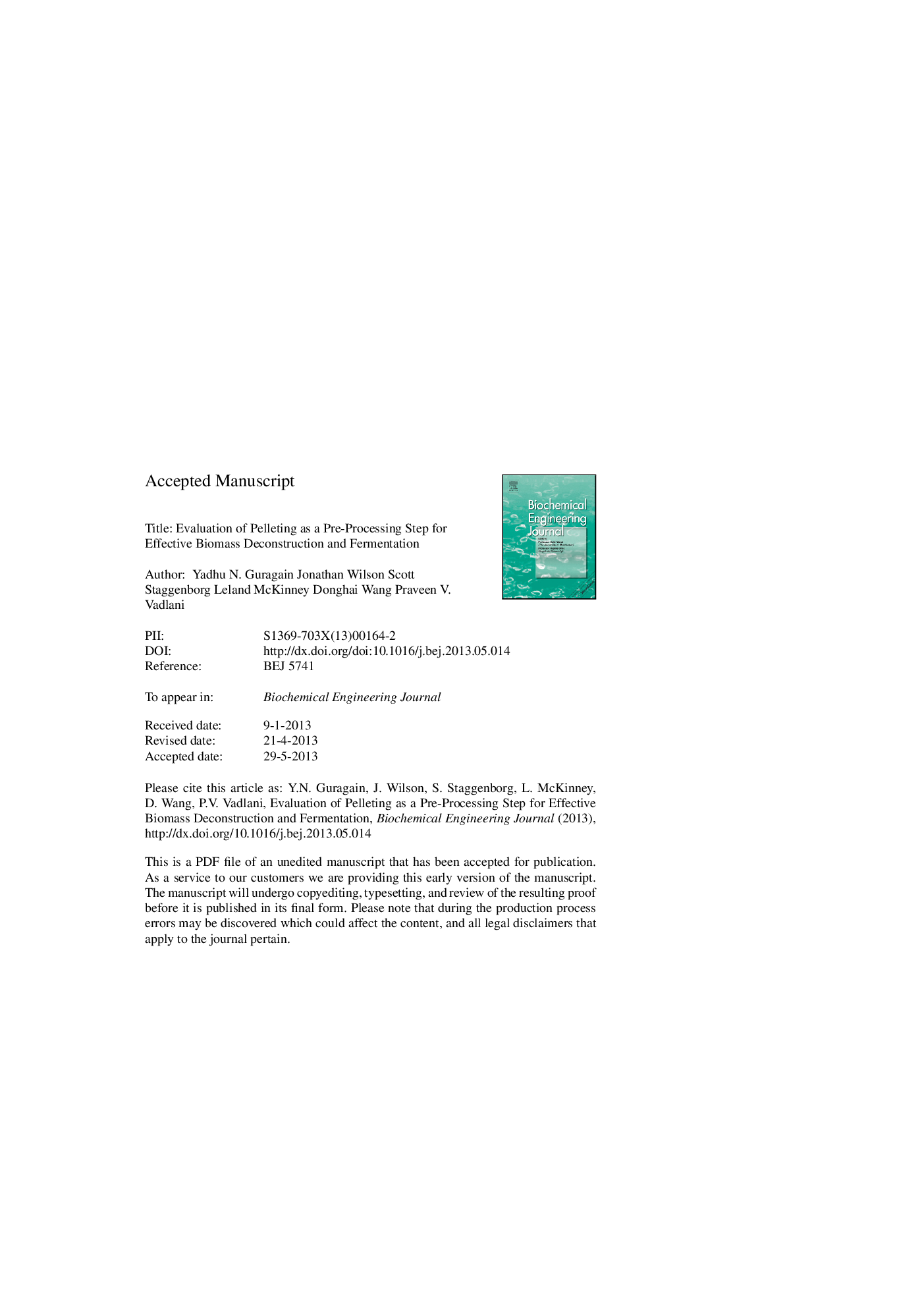| Article ID | Journal | Published Year | Pages | File Type |
|---|---|---|---|---|
| 6484120 | Biochemical Engineering Journal | 2013 | 35 Pages |
Abstract
Densification of bulky forages by pelleting reduces their transportation, handling, and storage costs. Because of high shearing force and frictional heating during the pelleting process, it is hypothesized that pelleting of lignocellulosic biomass could also partially deconstruct its complex structure and facilitate bioethanol production. In this study, pelleted wheat straw, corn stover, big bluestem, and sorghum stalk were evaluated for sugars and ethanol production, and compared with those of unpelleted biomasses. Mass recovery after alkali pretreatment increased by 14%, 11%, 2%, and 5%, respectively, in unpelleted biomasses. Lignin content reduced significantly more in pelleted samples for all types of biomass, except sorghum stalk. Volumetric productivity of enzymatic hydrolysis was 23%, 21%, 20% and 12% higher, respectively, in pelleted samples; ethanol yield on the basis of released sugars did not differ significantly between pelleted and unpelleted samples. These results indicate that the pelleting process led to better enzymatic hydrolysis of pretreated biomasses without affecting the quality of sugars for fermentation. However, overall yield of ethanol from the raw biomass was not significantly higher in pelleted biomasses because of higher mass loss during pretreatment process. In our study, we propose a schematic for complete utilization of various byproducts for enhanced economic viability.
Keywords
Related Topics
Physical Sciences and Engineering
Chemical Engineering
Bioengineering
Authors
Yadhu N. Guragain, Jonathan Wilson, Scott Staggenborg, Leland McKinney, Donghai Wang, Praveen V. Vadlani,
